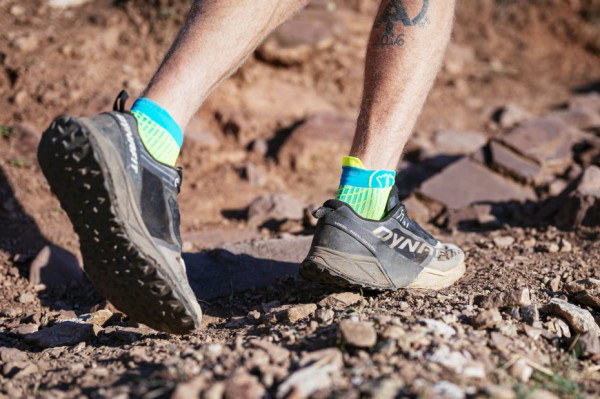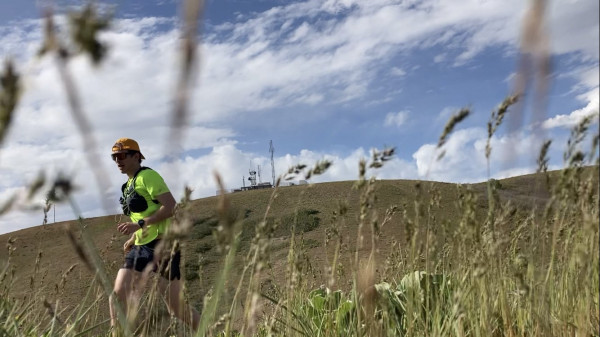7/11/2022 Q&A with Bijan Mazaheri
As skyrunning increases in popularity, especially in North America, we are creating a series of posts that interview the movers and shakers of this growing sport. Stay tuned for more! First up is accomplished road runner turned competitive skyrunner, Bijan Mazaheri, in conversation with SkyRun staffer, Ian Concannon.
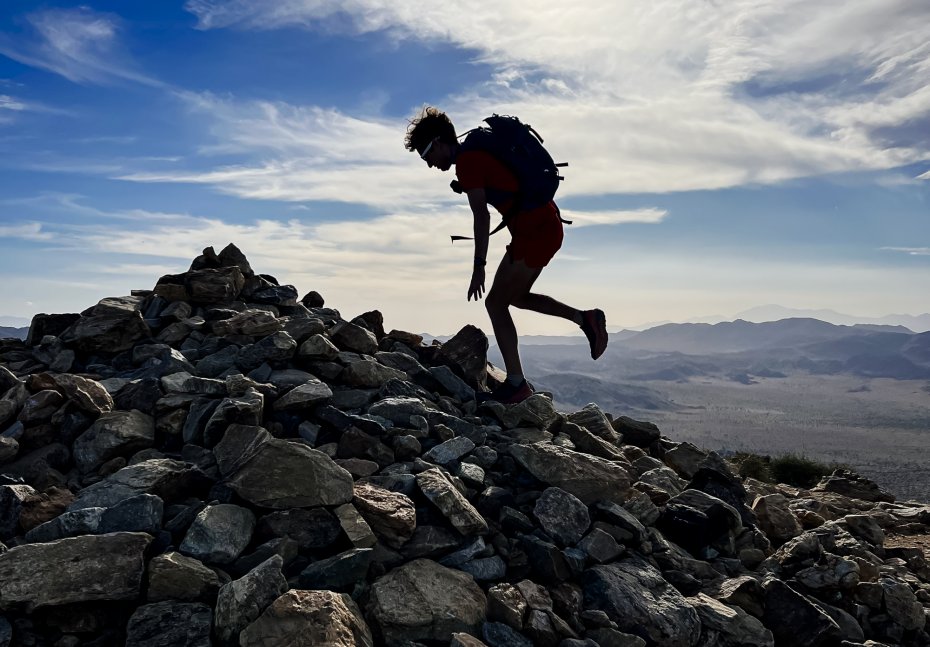
Coming in with a stacked running resume, we were excited to see Glendale, California-based runner Bijan Mazaheri make his first foray into skyrunning via this year’s Broken Arrow Skyrace in Olympic Valley, CA. He has run 2:15:26 at the Chicago Marathon, competed as one of the youngest athletes at the 2020 US Olympic Marathon Trials, and won the USA 50K National Championship in 2022. Besides adventure running and planning an upcoming move to Germany, Bijan is a PhD student in Computing and Mathematical Sciences at CalTech.
It’s interesting you identify as a road runner considering you ran cross-country and have always run a lot of trails.
I’m not a stranger to trails, but I would say I’m still a stranger to trail racing. Even in college I was always pushing for really hilly, technical trail runs. But once you get in a trail racing community, it’s very clear who’s the road runner. You look around at the race and there are skiers, bikers. Everyone has their different sports.
There are times when you’re not going faster than 12-13 minute per mile pace. Thinking about the Vertical Kilometer world record, you’re going up a kilometer but you’re not covering more than two miles. It becomes as different as having a runner go biking.
It seems trail running is less about pronating surface energy forward and more about your quads powering straight into the hill.
Right, there’s less efficient energy return. It’s just taking energy out of your body. Generate power, get up the hill. It would be pretty interesting to study trail running efficiency. Above a certain grade, it’s probably perfectly correlated to your V02 max or something.
How did you settle on the Broken Arrow for your first Skyrun race?
This was a big Salomon race. Coming into trail running from a road running background, I had no idea where the good races were. They don’t often have descriptive names. There’s the Golden Trail National and World Series, plus the UTMB series, which stands for Ultra Trail du Mont Blanc, but there’s a whole series that isn’t actually at Mont Blanc. So there’s all these different series and you’re like “What do I go do?”
Maybe part of that is that the epicenter for skyrunning is in Europe.
That might be true, especially since Broken Arrow is clearly trying to imitate a European trail festival, which they do because that model has been very successful. But it’s all really new, and it’s weird because the important skyrunning races are the races with prestige, but prestige for road running might be something like the Boston Marathon, which clearly goes back a while. But here, prestige goes back four, five years since the sport is so new. That’s one of the things that was helpful in joining Salomon—just being in that circle, I can actually see where other athletes are going and I can see what’s a good race.
The other interesting thing about these races is that even as it’s importing a European model and a European definition of what skyrunning is, the mountains in Southern California are different from the Alps. Running at 6,000 feet looks different here than it does there. Skyrunning is supposed to be technical, but technical in Southern California is usually loose dirt. Technical in the Sierras is like huge granite rocks, and technical in Europe might be muddy grass and snow. So these are different sports almost depending on where you’re located.
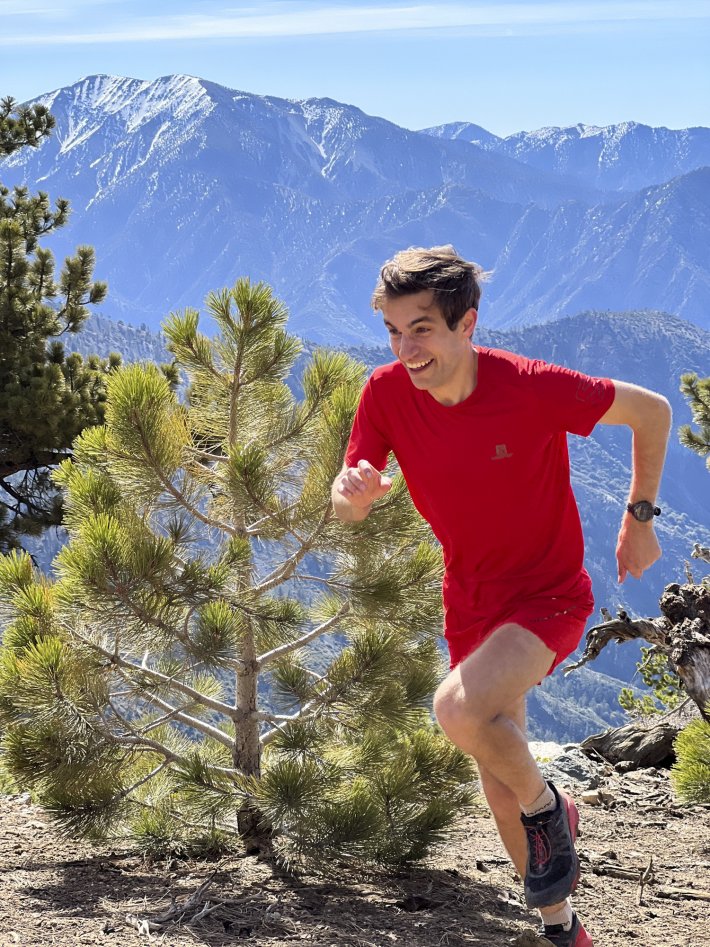
Speaking of which, how was the course at Broken Arrow?
The course was beautiful and hilly as you would expect. We got some good mountain weather; it was snowing the weekend of the course. I don’t know if it accumulated, but it was definitely cold—below 30 degrees. But generally the course was in pretty good shape, though it's unclear what that means for a sport that doesn’t exactly seek out fast smooth racing.
Did you sign up to do the VK just as a fun thing, or was it a strategic choice as catering to your strengths as a runner?
Both. I had heard enough about the learning curve for the technical downhills, so my thinking was that a VK would be all fitness—my plan was to just get fit and I should be competitive. What I didn’t take into account was fitness at 8-9,000 feet is different. I had trained on all these hills but then I showed up and at no point were my legs even remotely close to being at their max. My heart rate was low, but I just couldn’t breathe. So ultimately I thought the VK would speak to my strengths but the reality is that coming from sea level and trying to go at my V02 maximum wasn’t in the cards.
I want to ask about two training runs in the leadup to these races: running up Hawai’i’s 13,803 foot volcano Mauna Kea, and southern California’s San Jacinto Peak, which has over 8,000 feet of prominence. Were you aiming for Fastest Known Times (FKTs) on those? What was the idea there?
So according to Strava, the Mauna Kea run was a “King of the Mountain” but I wasn’t aiming for an FKT. I stopped and took pictures. I purposely chose not to go for an FKT for two reasons. One, I was in Hawai’i and wanted to enjoy the beauty and not worry about getting lost. Two, and probably more importantly, the mountain is a very spiritual place for Hawaiians and “King of the Mountain” felt weird to me. Like, I’m gonna go conquer a mountain? I was trying to avoid the whole mentality of trying to crush the mountain, which somehow felt disrespectful.
This gets at one of the weird parts of trail racing, at least for me. I’ve always loved competing on the roads and track, but trail running has always been about enjoying and exploring the world. I’ve had coaches tell me trail runs are bad for my competitiveness on the roads, so skyraces were nice in that I didn’t really have to hold back on the things I wanted to do. On the other hand, it does feel like I’ve tainted a sacred space in my life. Because those runs were “bad” for my training, I never really worried about training when I was doing them, but now I do. I think it's still possible to strike a good balance between competition and enjoyment, but it's something I need to think about more now.
San Jacinto gains 11,000 feet up but you only run 3,000 down, then you take the tram down. That’s called Cactus to Clouds. Cactus to Clouds to Cactus is the more extreme version where you run all the way back down. And that is insane! The goal is to get out of the desert before it gets hot, but if you have to go back down you’re descending into 110 degree heat. You could probably do it a different part of the year but then you’re in the snow for half of it. But yeah, that’s a great run!
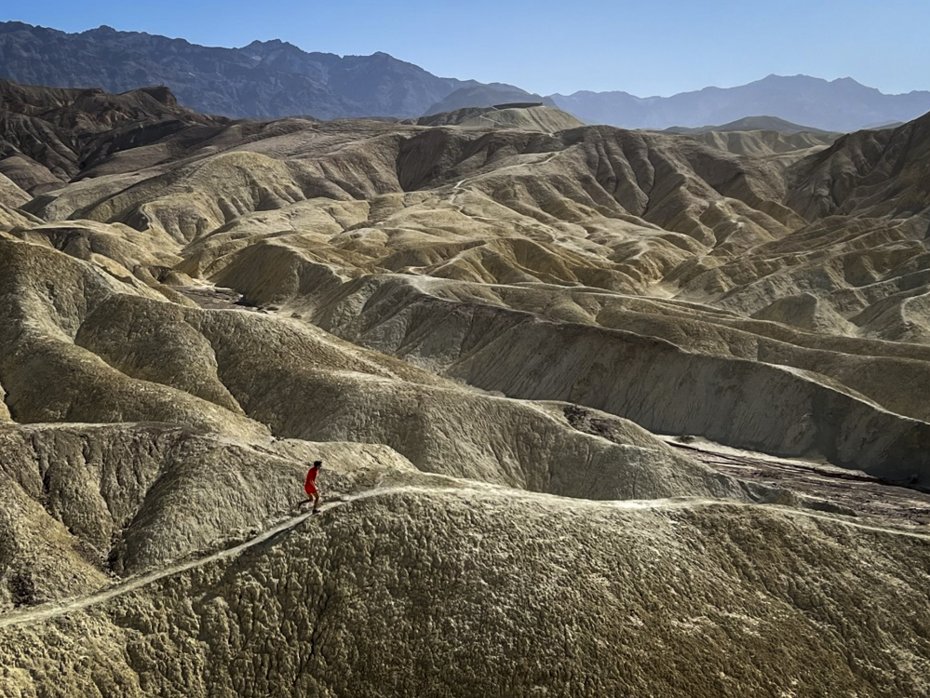
It seems one of the benefits of skyrun is it’s less about stacking mileage and hitting paces and more about what cool mountain you’d like to climb.
Right, it’s a kind of project-based training. And one project helps you think of others. With the people I train with in LA, we had to start doing these mini-projects that had 5,000 and 7,000 feet of climbing so we didn’t die running up San Jacinto. It’s a different mentality and I find it very refreshing from road running training which is more about hitting the paces so I can get a certain time.
Because of the nature of skyrunning, it’s also hard to even know what pace means. 70-second quarters means the same thing on every track around the world. Before Broken Arrow someone asked me “What time am I trying to hit?” and I was like “I don’t even know how long the race is!” I have no idea what I’m trying to hit. It’s more about going out there and seeing what happens, and I think that mentality is refreshing for a lot of reasons.
So all this was refreshing, but it sounds like you might have also felt a little out of place at the event, knowing fewer people.
It was funny, it was the same feeling as when I went to England for a year and I had never thought of myself as an American, but all of a sudden it was blatantly obvious being American. Once I was at a trail festival, it was the first time I started thinking of myself as a road runner. I felt a little like an outsider. Not to say that any of the people there were themselves alienating. But I think it can be a little weird and scare people when they’re first getting into the sport, realizing that these people are a little more on the extreme sports side of things. At the end of a marathon there are people from all different parts of the world and have different jobs and life outlooks. At the skyrun race, it’s people who choose to live in outdoor-focused communities. And they’re all like that and they all know each other.
It’s also not incredibly diverse, racially or otherwise. The sport involves running up a ski resort –there’s financial barriers to the travel and physical barriers to training. I live in a city that has mountains, and even those mountains are different from the Sierras.
I think we are witnessing the growth of trail running, but it’s interesting in that a lot of it seems to be coming from the companies. Think about track, right—why would I sponsor a track athlete? Who buys spikes? High schoolers? There’s a bigger market of people willing to buy outdoor gear and I think the existence of that market has driven the companies to make the sport bigger.
Isn’t that the case for any sport or market?
Yes, but not every sport is driven in the same way by companies. I’m not sure soccer for example is driven by the soccer ball companies. Whereas in trail running the driving force seems to be coming from trail running companies, but they’ve done a very good job in getting drones everywhere so it’s now becoming a sport that people like to watch too. In making the sport more visible, literally, with the live coverage—and really supporting certain events, the companies are making the sport accessible to more people. I’m not sure it’s a greater “diversity” of people, but you get other people trying out the sport who might not have otherwise.
Salomon and Hoka are in a way engineering the sport. Broken Arrow is obviously amazingly well organized, but I think a big part of why it has become so big is because Salomon has said “We’re going to make this big.” With trail/shoe companies choosing the races that are going to represent the top of trail running, they really are engineering the sport.
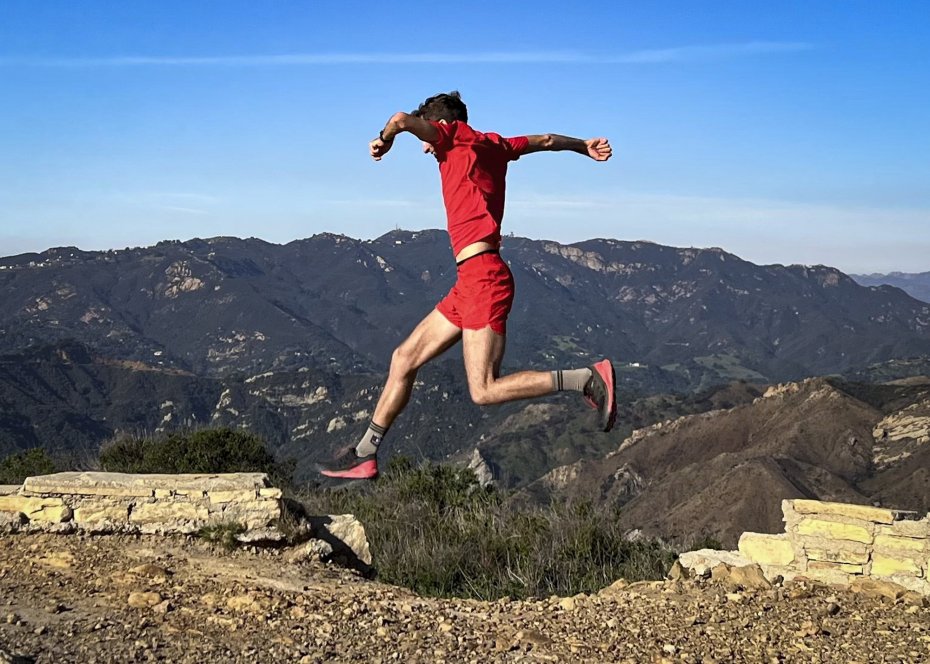
Okay, I’ve got to ask. You’re moving to Europe soon—any plans to try skimo?
I can’t not skimo! There’s really no choice here (laughs). I’ve got the boots and bindings I need from Salomon. It’s ski touring gear, not light enough if I was really serious about skimo racing, but I can start ski touring as my way into skimo.
I guess I could jump straight into skimo racing, but kind of like the way I handle trail running, it’s not just the racing that appeals to me, but getting out and enjoying my time in the mountains. And I think I will do that before I hop in a skimo race. But I definitely want to try it, it seems to be the cool new thing now.
Thanks so much for the interview! We’re excited to see what you get up to next!
------
Follow Bijan on Instagram @honey_bijan or check out his website, bijanmazaheri.com.
Comments
